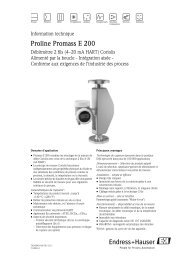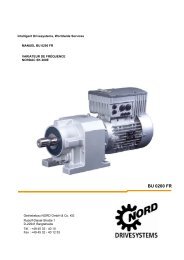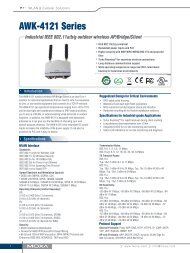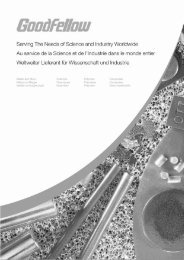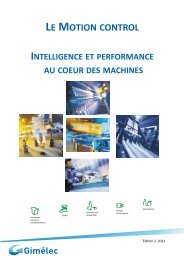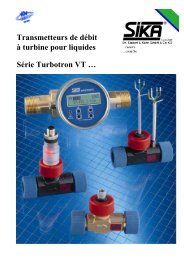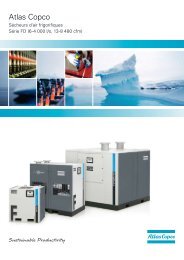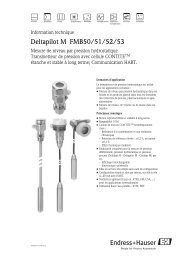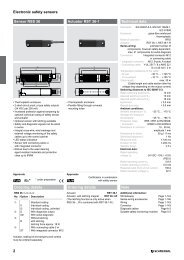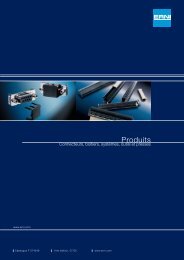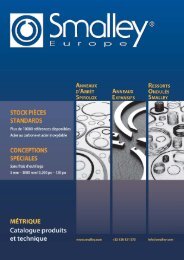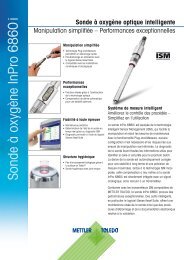Flexible Heaters Design Guide - BiS Sistem
Flexible Heaters Design Guide - BiS Sistem
Flexible Heaters Design Guide - BiS Sistem
Create successful ePaper yourself
Turn your PDF publications into a flip-book with our unique Google optimized e-Paper software.
Glossary<br />
Introduction <strong>Design</strong><br />
<strong>Guide</strong><br />
Polyimide<br />
<strong>Heaters</strong><br />
Silicone<br />
Rubber<br />
<strong>Heaters</strong> (foil)<br />
Standard<br />
Polyimide<br />
& Rubber<br />
Rubber<br />
<strong>Heaters</strong><br />
(wire-wound)<br />
Mica <strong>Heaters</strong> Thermal-Clear<br />
<strong>Heaters</strong><br />
All-Polyimide<br />
<strong>Heaters</strong><br />
Sensors,<br />
Controllers &<br />
Accessories<br />
Reference<br />
Proportional band: A region around the setpoint where the output<br />
is proportional to the process’s distance from that setpoint.<br />
For example, 100% heater power during warmup is proportioned<br />
to 75%, then 50%, then 25% as temperature nears setpoint.<br />
General rule: Set just wide enough to prevent temperature from<br />
wandering outside band during normal operation.<br />
Proportional control: A control method where the controller<br />
output is proportional to the temperature difference from set<br />
point.<br />
PSA (Pressure-Sensitive Adhesive): An adhesive that does not<br />
require heat or extreme pressure to apply. Simply peel off the<br />
release liner, and firmly press into place.<br />
PTFE (polytetrafluoroethylene): A flexible electrically insulating<br />
material known for its “non-stick” characteristic. It is often used<br />
for its excellent chemical resistance. DuPont’s tradename for PTFE<br />
is Teflon.<br />
Radiation: The transfer of thermal energy through space (especially<br />
a vacuum) by electromagnetic waves.<br />
Resistance density: Resistance per unit area. Usually listed as a<br />
maximum, it is dependent upon construction materials such as<br />
foil, adhesive, and insulation.<br />
Resistance tolerance: The range of actual resistance from nominal<br />
(or target resistance), at a reference temperature (usually 0°C).<br />
Generally, wire elements have a tighter resistance tolerance than<br />
etched foil elements.<br />
RS-485: A communication standard for interfacing computers to<br />
process instruments. Allows multiple instruments on a single<br />
twisted-pair cable. Convertible to RS-232 with proper adapter.<br />
RTD (Resistance Temperature Detector): A sensor whose<br />
resistance changes with temperature. The most accurate of<br />
commonly used thermometer types.<br />
Self-Tune: The ability of the CT15 or CT16A to set its own PID<br />
parameters to best match the process. Can be set either to learn<br />
once or to continuously observe and adjust.<br />
SensorCalc: A Minco web-based program that provides resistance<br />
versus temperature data for a variety of sensors and heaters.<br />
Shrink band: Pre-stretched strips, that shrink when heat is applied,<br />
for mounting heaters<br />
or temperature<br />
sensors to cylinders.<br />
Silicone rubber: A flexible, synthetic elastomer used to electrically<br />
insulate heaters and Thermal-Ribbons.<br />
SMT (Surface Mount Technology): A printed circuit wiring method<br />
that uses solder pads on the surface of the circuit to mount<br />
components, thereby eliminating through-holes.<br />
Snap action: A switching method, often used in thermostats, in<br />
which a temperature-sensitive bi-metallic element causes fast<br />
make and break of electrical connections. In contrast to creep<br />
action, this method results in less electrical noise, but requires<br />
a significant differential between temperatures that open and<br />
close the connection, resulting in looser control.<br />
Specific heat: The amount of heat per unit mass required to raise<br />
the temperature of a material 1°C.<br />
SSR (Solid State Relay): A type of relay with no moving contacts to<br />
wear out, offering life many times that of mechanical relays. Best<br />
for time proportioning.<br />
Standard heaters: Predesigned heaters that are made-to-order.<br />
Typical lead time on Minco standard heaters is 3 weeks ARO.<br />
Stretch tape: An elastic, silicone rubber tape for mounting heaters<br />
or temperature sensors to cylinders.<br />
TCR (Temperature Coefficient of Resistance): The average<br />
resistance change per unit resistance between 0°C and 100°C.<br />
Sometimes it is simplified to the ratio of resistance at 100°C to<br />
the resistance at 0°C.<br />
Thermal Calc: A Minco web-based program to assist in calculating<br />
heater wattage requirements from known parameters.<br />
Thermal Calc is available at www.minco.com/e2e.<br />
Thermal-Clear: A heater made with transparent insulation and a<br />
fine wire element. Thermal-Clear heaters transmit over 80% of<br />
visible light.<br />
Thermal conductivity: A measure of how fast heat travels through<br />
a material. Often referred to as the “k” value.<br />
Thermal-Ribbon: Minco’s family of flexible temperature sensors,<br />
featuring a wide variety of<br />
resistance, TCR, and temperature<br />
ranges. Thermal-<br />
Ribbons can be integrated<br />
into a heater, or custom<br />
designed to virtually any<br />
shape.<br />
Thermistor: A temperature sensor made from semiconductive<br />
material. Thermistors are highly sensitive (resistance changes<br />
dramatically with temperature), but non-linear and typically not<br />
very accurate.<br />
Thermocouple: A temperature sensor made by joining two<br />
dissimilar metals at discrete points called junctions.<br />
Thermocouples produce a small voltage when there is a<br />
difference in temperature between junctions.<br />
Thermofoil: An innovative heating technology from Minco,<br />
which utilizes an etched-foil process to create a flat, flexible<br />
heater for optimum heat transfer. <strong>Heaters</strong> can be designed in<br />
virtually any shape, and Minco can integrate temperature<br />
sensors, flex circuits, and control electronics.<br />
Thermostat: A temperature-sensitive switch used as an economical<br />
on/off controller, or for overtemperature protection. See “snap<br />
action” and “creep action.”<br />
Thin-film: An electrical component made by depositing a thin<br />
layer of metal on a substrate (usually ceramic). Thin film<br />
techniques can be used to make heaters or temperature sensors.<br />
Time proportioning: Scaling of output by varying the ratio of<br />
on-time to off-time; i.e. 80% power = 80% full on, 20% off.<br />
TÜV: A testing and certification organization, through which Minco<br />
has ISO 9001 accreditation, and other approvals.<br />
UL (Underwriters Laboratories): An independent product safety<br />
testing and certification organization, recognized mostly in the<br />
United States and Canada..<br />
ULA: A thermosetting, acrylic adhesive that is UL recognized.<br />
Vulcanize: A process, using heat and pressure, used to bond<br />
uncured rubber to rubber, metal, ceramic, glass, etc.<br />
WA: A thermosetting acrylic adhesive.<br />
Watt: The heat produced by one ampere of current through a<br />
resistive load of one ohm.<br />
Watt density: The amount of power per unit area, often expressed<br />
as watts per square inch or watts per square centimeter.<br />
58<br />
Sal es and Support<br />
|<br />
Americas: 763.571.3121 | Europe: (33) 5 61 03 24 01 | Asia Pacific: (65) 6511 3388





